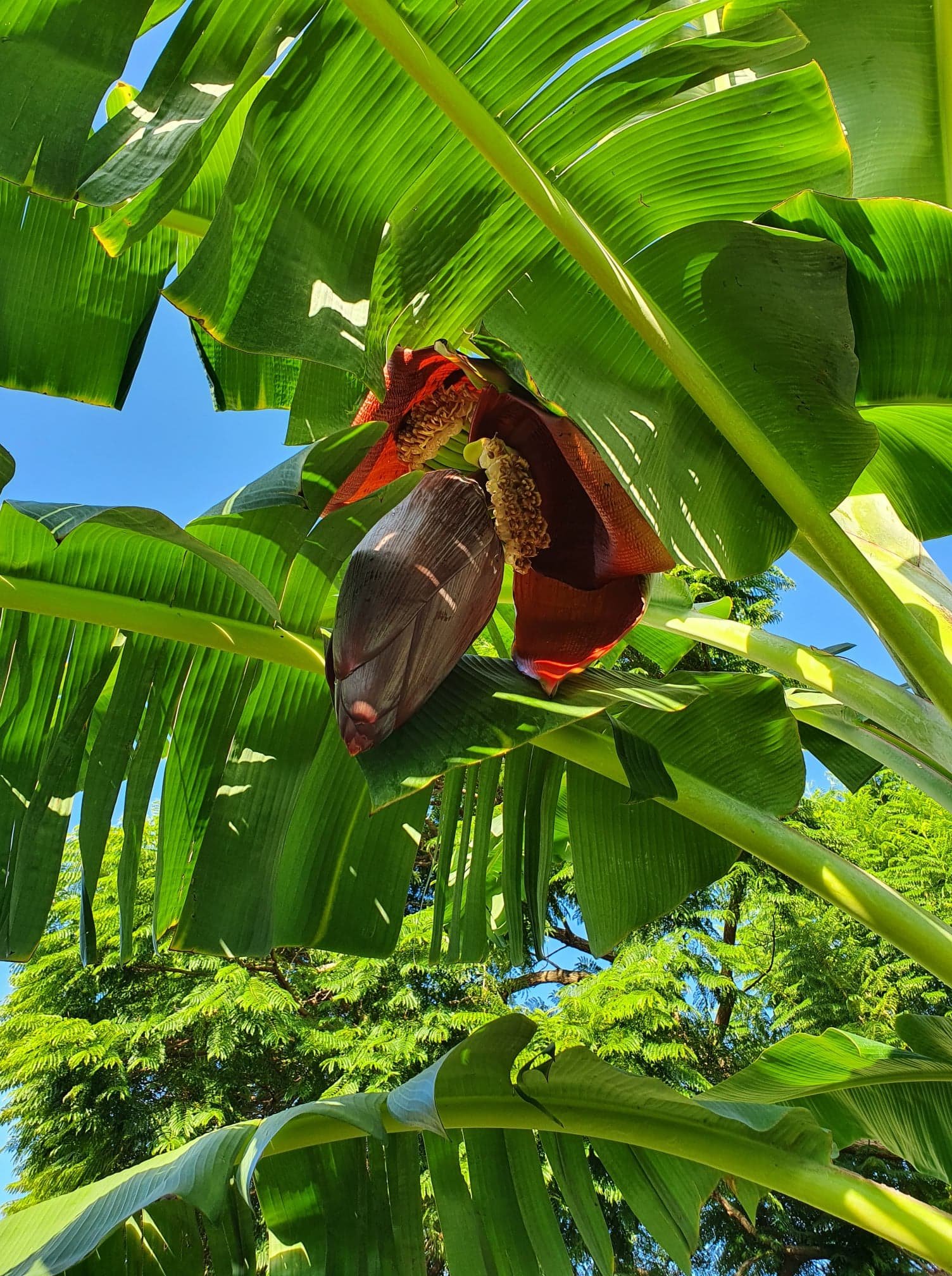Day O! - Bananas
My potassium levels must be at an all time high. We cut our bunch of bananas down last weekend and have been feasting on them all week. To protect the ripening bunch from bats, I had them covered in an old chicken feed bag, and I hadn’t realised the top ones were starting to ripen. The bats did though and ate through the bag to get to them… (so now I’m not entirely sure about the bag theory). Luckily they only got a few, and now I have a lot of very fat lady finger bananas to work my way through.
Harvested bananas. You can see where I’ve ripped a few off after the bats got them.
Bananas are actually a giant herb, not a tree, and their ‘trunk’, called a pseudostem, is actually just a cylinder of tightly rolled leaf stalks which emerges from an underground rhizome. Nevertheless that pseudostem is capable of supporting a very heavy bunch of bananas 4m in the air.
Can you see the flag leaf in the middle, sticking straight up?
Right before flowering a banana will send up a ‘flag leaf’ which is a short stubby little leaf, heralding the arrival of the flower bell. The flower bell is a layered combination of bracts and flowers that are gradually pollinated down the stalk, resulting in your bunch of bananas, each layer forming a ‘hand’. From flowering, bananas take months to ripen, depending on their variety and the weather. This is usually in the realm of 4-6 months; mine flowered 5 1/2 months ago at the beginning of May (I planted it in October last year). You can leave the fruit to ripen on the plant (and risk the bats) or harvest them when the ridges on the fruit look more rounded than square and the colour is starting to look a little less green. Cut the bunch and store in a cool dark place away from bats and rats where they will continue to ripen.
The banana bell. The red parts are bracts which open up to reveal a layer of flowers. You can just see some green fruit forming.
In addition to delicious ripe fruit, you can cook with the green bananas and use banana leaves as wrappers to steam or barbeque. Even the flower bell is edible, often being cooked in curries and stirfries in sub tropical Asian cuisines.


